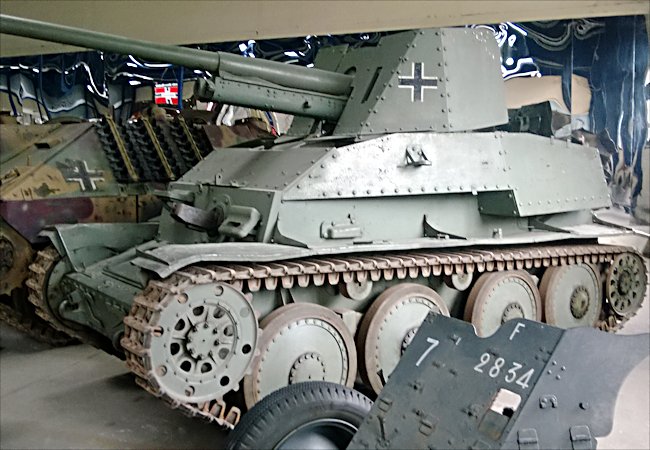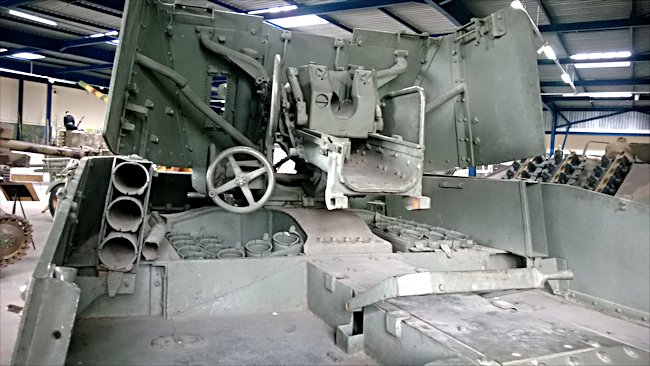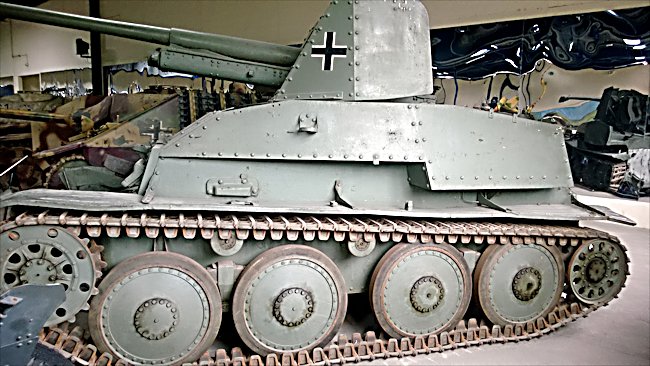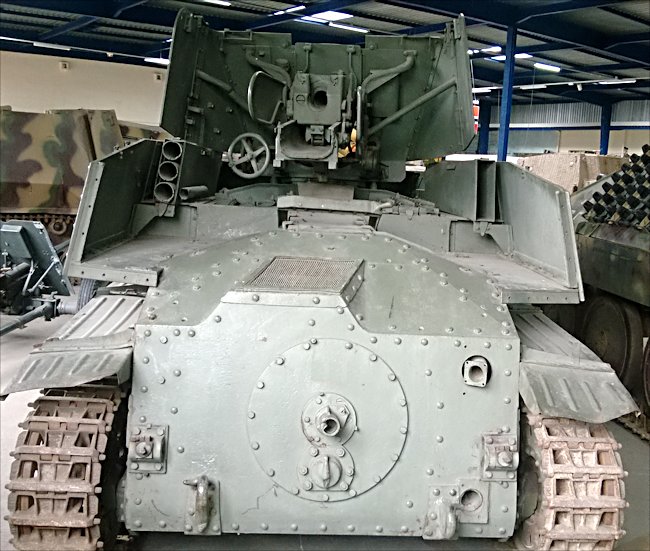The Marder III 38(t)
This German Panzerjager Marder III 38(t) 76.2mm PaK 36(r) Self propelled Gun (Sd.Kfz 139) can be found at the French Tank Museum in Saumur in the Loire Valley. The Museum is called Musée des Blindés ou Association des Amis du Musée des Blindés, 1043, route de Fontevraud, 49400 Saumur, France www.museedesblindes.fr . The word Blindés means armoured.

German Marder III 38(t) Sd.Kfz 139 Self propelled Gun
Captured Soviet Guns were used on the Marder III 38(t)
During Operation Barbarossa, the invasion of Russia in 1941, the Germans had a nasty shock when the shells from their tank guns and anti-tank guns, bounced off the armour of the new Russian tanks. They needed a more powerful mobile weapon fast.
The Germans had captured a lot of the very capable Soviet 76.2mm F-22 Model 1936 divisional field guns. The German army renamed this weapon the 7.62 cm PaK 36(r). The decision was made to fit these guns onto the chassis of a Panzer 38(t) tank.
The prototype Panzerjäger 38(t) emerged as early as December 1941. There was a great need for a self-propelled gun that could take on the new Russian tanks, the T34/76 and KV-1. Although production of the Czechoslovakia made Panzer 38(t) tank ended in 1942, the chassis continued being produced until 1945 as an anti-tank and artillery mount.

There was very poor crew protection on the Marder III 38(t) Sd.Kfz 139 Self propelled Gun
Surprisingly the first Panzerjager 38(t) self-propelled guns, known as the Marder III 38(t) did not receive their baptism of fire on the Russian front. They first saw action with the Afrika Corps in the desert Libya and Egypt.
The new vehicle was obviously a stop-gap design, no matter how desperately needed. It had a big designed flaw. It was too tall. Whilst the gun was able to penetrate 50mm of enemy armour at the long range of 2000m it was handicapped by its high silhouette. It was difficult to hide and attractive return fire.
In a European situation crews could try and camouflage their vehicle in woods, behind tall hedges or inside buildings. When fighting in the desert, there was a distinct lack of cover. The protective shield only offered a maximum of 15mm of protective armour that can only just stop a bullet. Shrapnel from nearby high explosive British HE rounds often penetrated the gun shield killing the crew.

The height of the Marder III 38(t) made it an easy to see target in the desert.
The Marder III 38(t) tank destroyers were produced by the Czechoslovakian company BMM (Böhmisch-Mährische Maschinenfabrik AG) Prague. They were eventually phased out in favour of the fully armoured tank destroyer type like the Jagdpanzer 38(t) Hetzer and Stug III that had lower profile and greater crew protection.

The hole in the middle of the round disk on the rear of the Marder III 38(t) was where the engine crank handle was inserted to start the engine. The vehicle did have an electric starter but that was only to be used in emergencies so as not to wear it out. The bottom right hand hole was where the heat lamp was inserted on cold mornings to warm up the engine fluids that had frozen.
Where can I find other preserved Marder III SPGs?
- Marder III with 7.62 cm PaK36(r) - Musée des Blindés, Saumur, France
- Marder III with 7.62 cm PaK36(r) - Fort Lee U.S. Army Ordnance Museum, VA, USA
- Marder III Ausf. H - Munster Panzer Museum, Germany
- Marder III Ausf. H - Museo di guerra per la pace Diego de Henriquez, Trieste, Italy
- Marder III (Vis-mod Pz. 38(t)) - Central Museum of the Great Patriotic War 1941 - 1945, Park Pobedy, Moscow, Russia
- Marder III Ausf. M - Steve Lamonby (private owner), UK
- Marder III Ausf. M - Musée des Blindés, Saumur, France
- Marder III Ausf. M - Museo di guerra per la pace Diego de Henriquez, Trieste, Italy
- Marder III Ausf. M - U.S. Army Center for Military History Storage Facility Anniston, AL, USA
- Marder III Ausf. M - Victory Museum, Auburn, IN, USA
- Source - Pierre-Oliver Buan - http://the.shadock.free.fr/Surviving_Panzers.html
WW2 tank books

